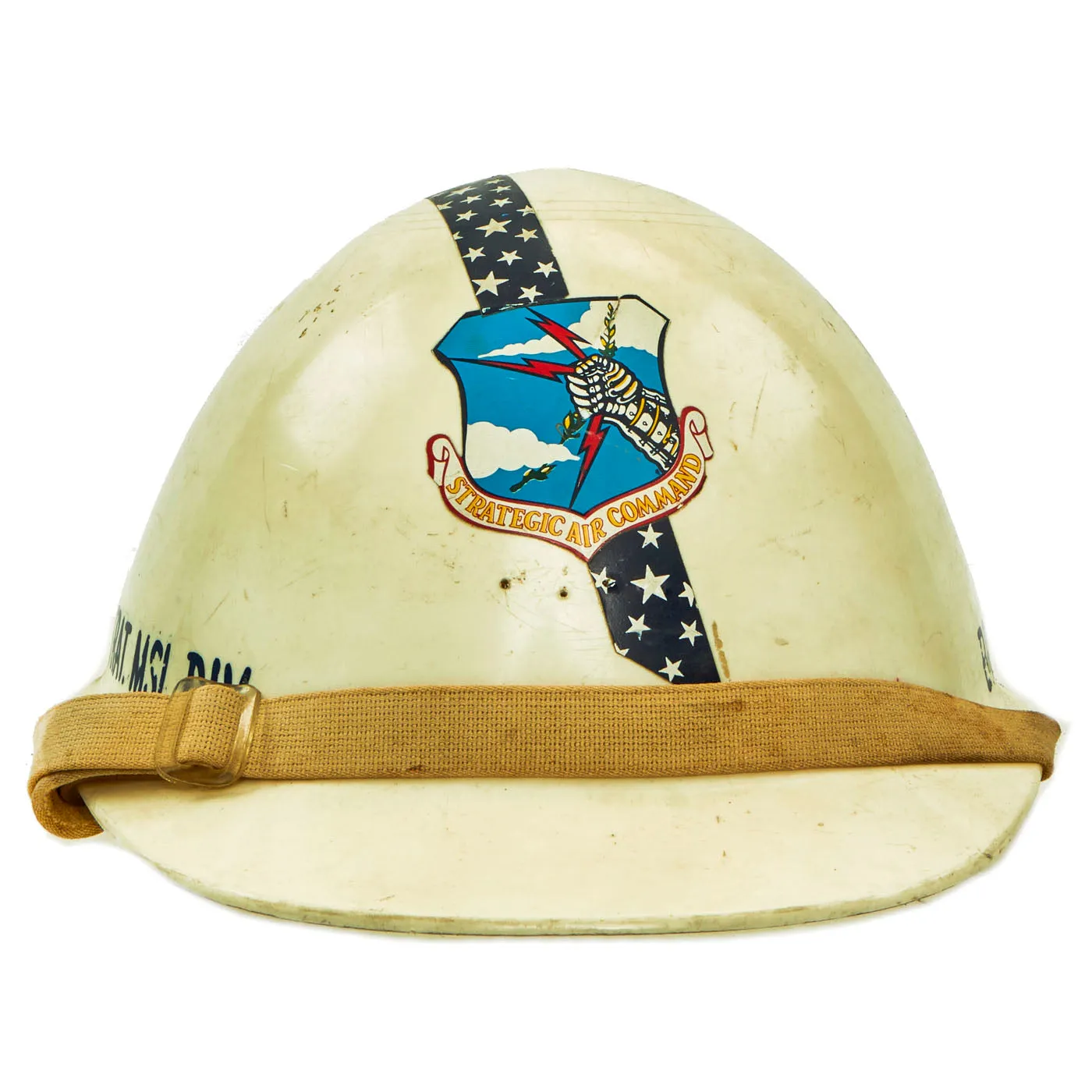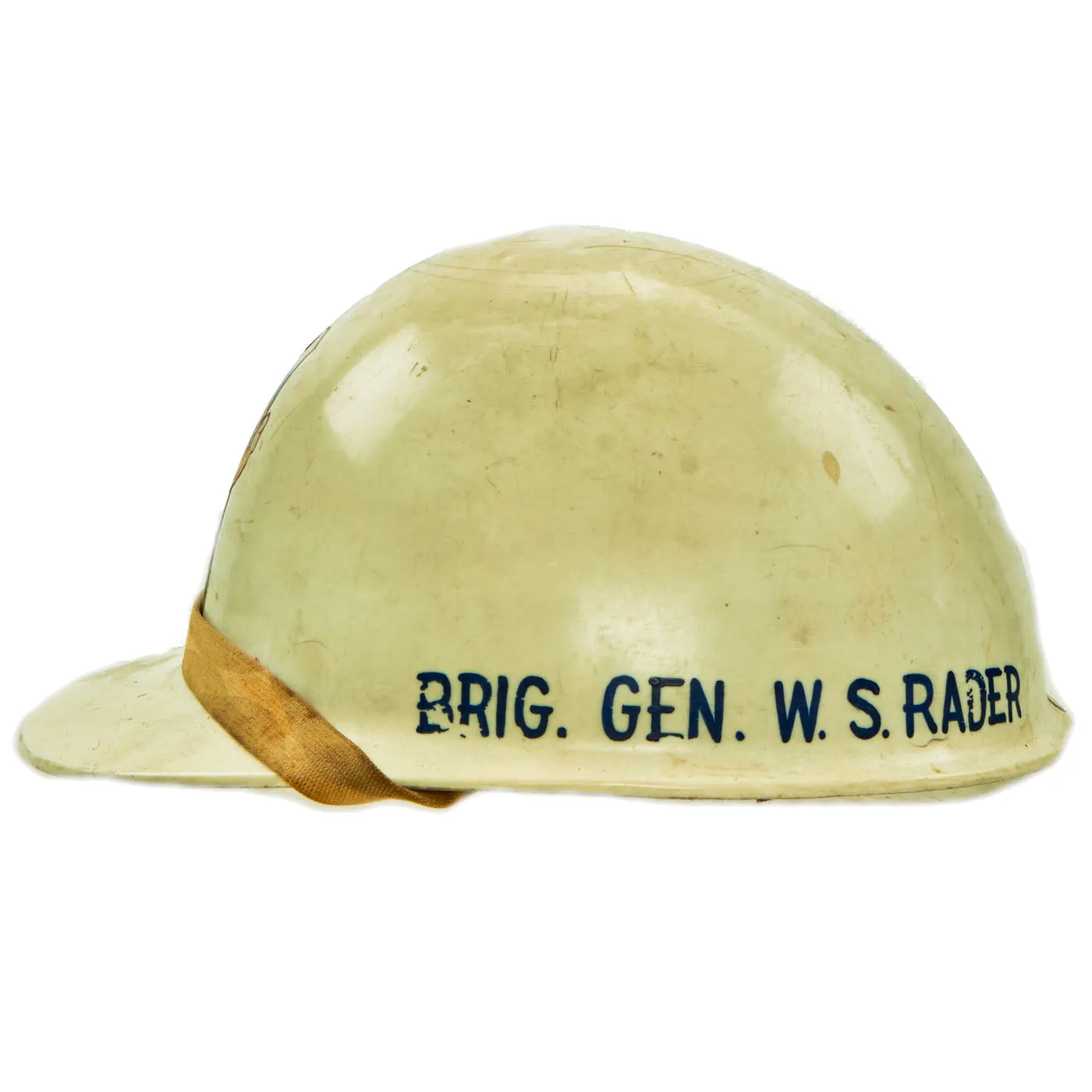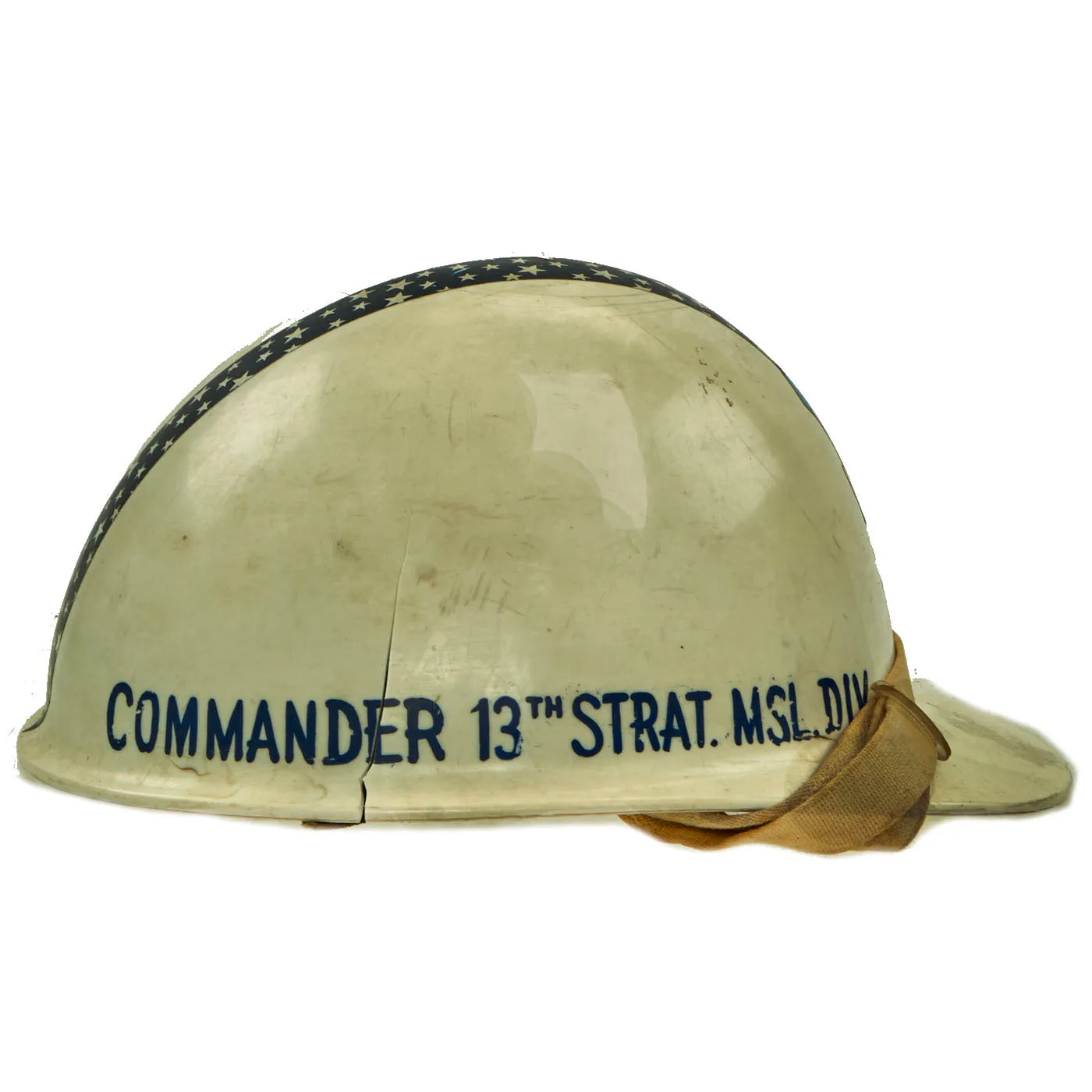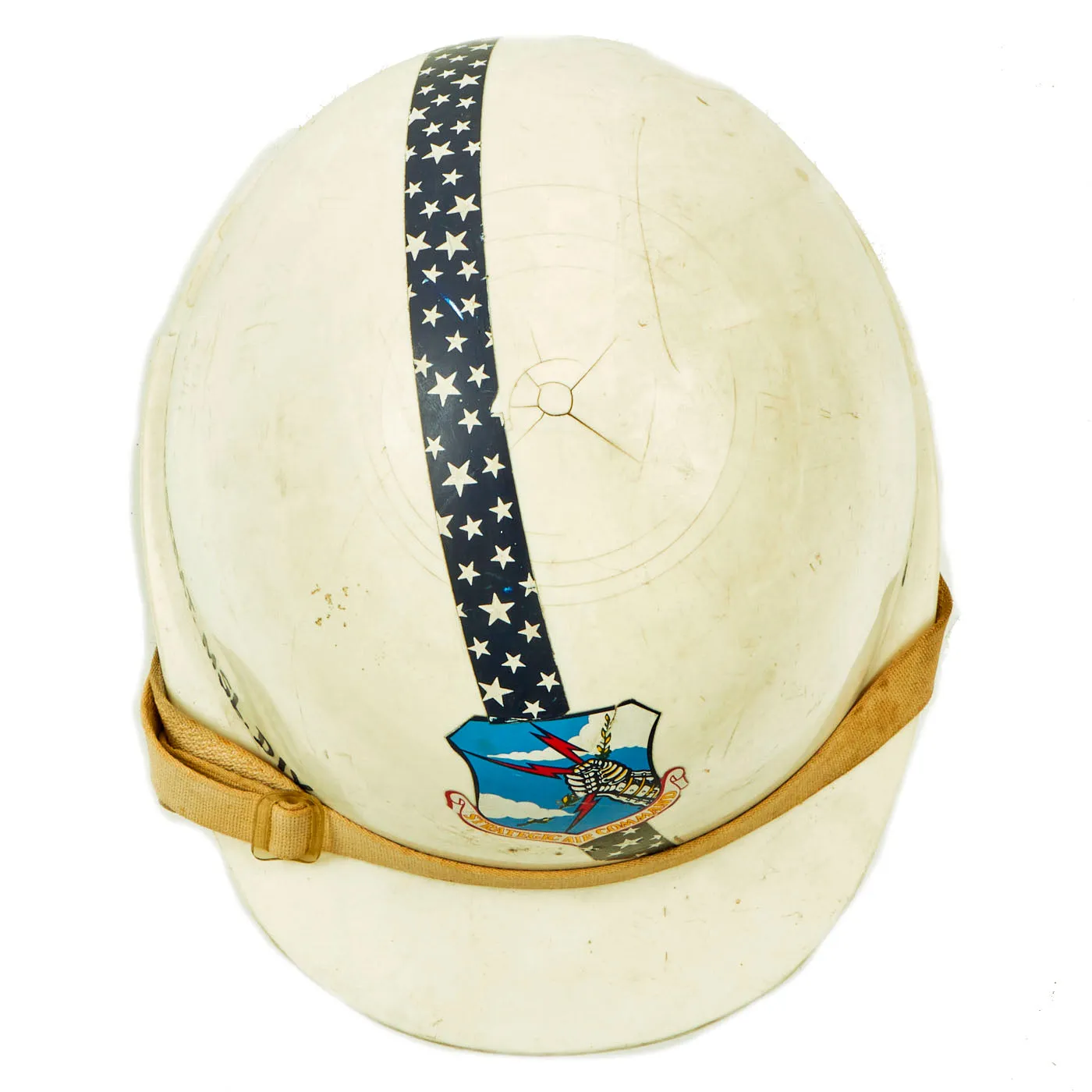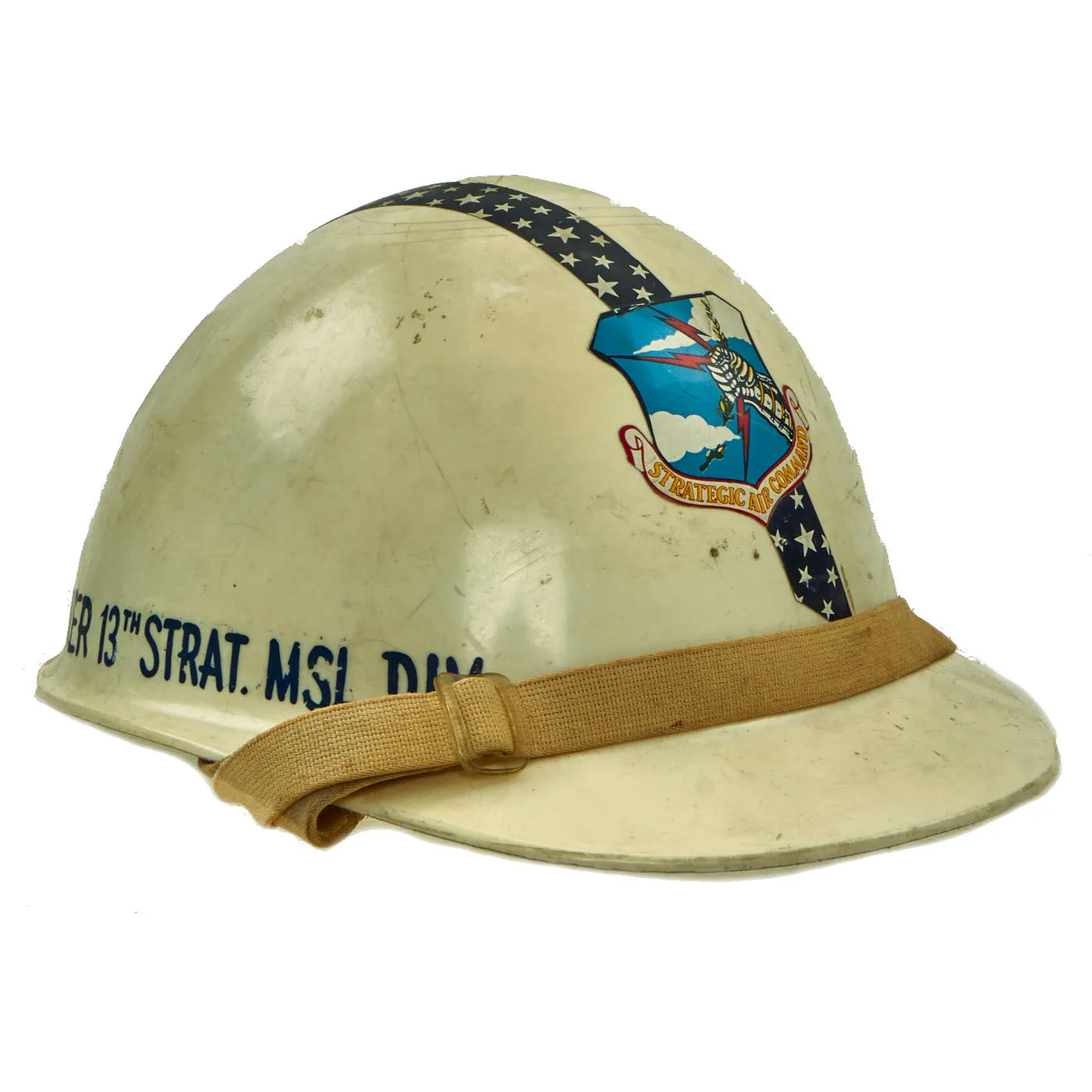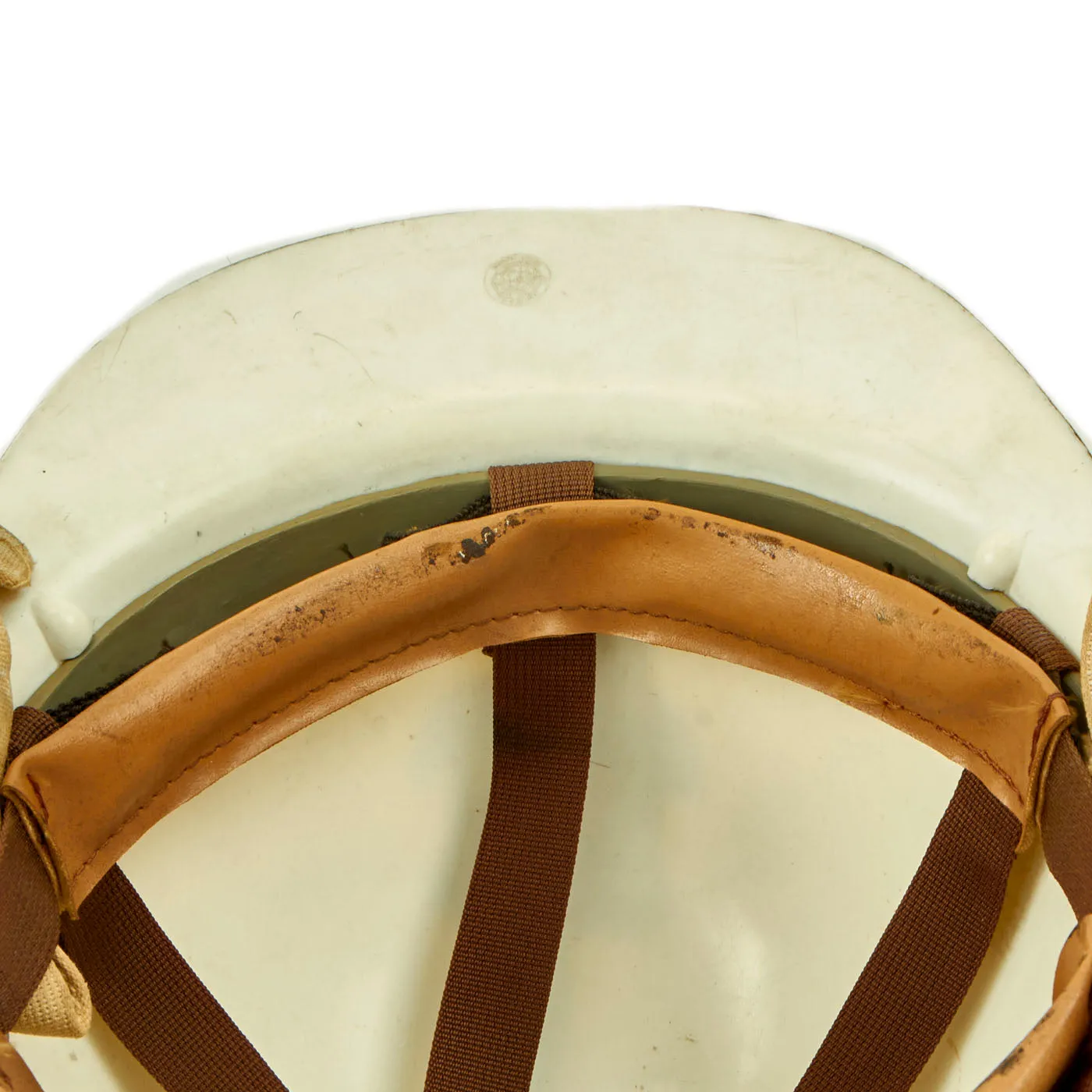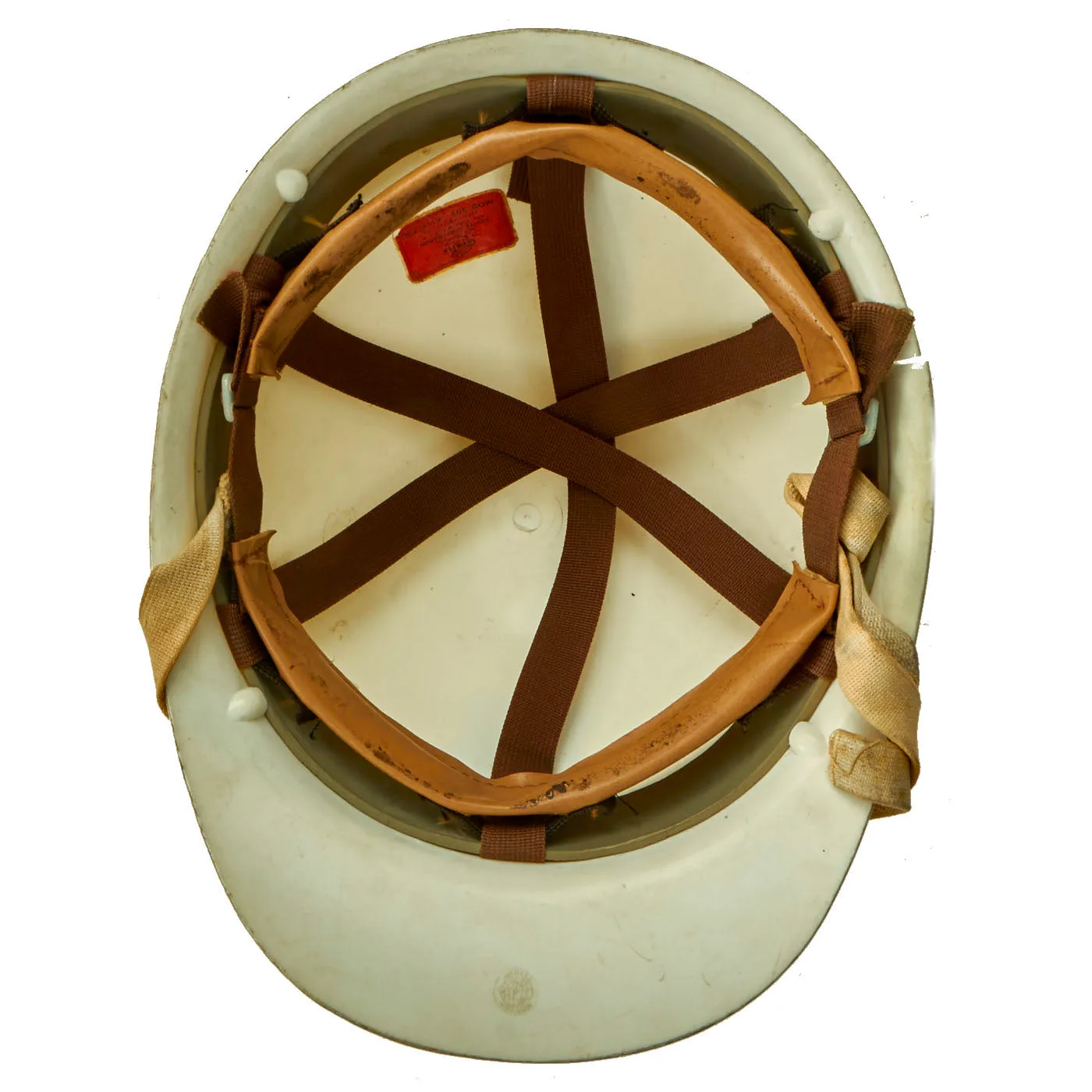Original Item: One-Of-A-Kind. This is a fantastic Vietnam War era Gentex Hardhat that belonged to Air Force Brigadier General William S. Rader, who was the Commander of the 13th Strategic Missile Division which existed under this name from January 1963 to July 1966.
Brigadier General William S. Rader returned to Vandenberg Air Force Base, Calif., Jan. 20, 1965, to become the deputy commander of Strategic Air Command's 1st Strategic Aerospace Division. He had previously served there as the commander of the 704th Strategic Missile Wing (Atlas), and for a brief period, as deputy commander, 1st Missile Division, before departing for Francis E. Warren Air Force Base, Wyo., in July 1959. At F.E. Warren Air Force Base, General Rader commanded the 13th Strategic Missile Division.
General and Mrs. Rader first came to Vandenberg Air Force Base (then known as Cooke Air Force Base) in the summer of 1957. The 704th was a unit of the Air Research and Development Command at that time.
A native of Wheeling, West Virginia., General Rader entered the Army Air Corps in November 1940, as an aviation cadet. Later, as a B-17 aircraft commander in 1942, he completed 17 sorties during the Battle of Midway.
On one mission over the Pacific, which lasted more than 17 hours, his aircraft was so badly damaged by Japanese guns it was unable to complete the return to Hawaii. For nearly 20 hours, the general floated in the water supported only by a life jacket before being sighted by another B-17.
As flight commander of the 368th Bomb Squadron in England later in the war, General Rader made one of the first deep penetration, daylight raids over Europe. He took his unit, unescorted by the shorter range fighters, to a point more than 200 miles southeast of Paris. Despite heavy enemy fire, which knocked out two of his aircraft's engines and the manual elevator controls, he bombed the primary target and made it back to England on automatic pilot. For this, General Rader was awarded the Silver Star on Aug. 26, 1943.
The general also led the Eighth Bomber Command's first division of B-17s that month against the ball bearing plants of Schweinfurt, in one of the most historic missions of the war in Europe.
He has studied at Wittenberg University, Springfield, Ohio, and at the University of Maryland, College Park, where he completed requirements for a degree in military science.
A graduate of the Air War College, General Rader has held many assignments which include deputy commander, 7th Bomb Wing; air operations officer with the Joint Task Force on Eniwetok; chief of the Tech Training Division, Headquarters U.S. Air Force; assistant for Operational Readiness Division, and chief for Plans and Policies, Headquarters ARDC; and, prior to his assignment to Cooke Air Force Base, he served as inspector general, Headquarters ARDC.
His work with the Air Research and Development Command earned for him the Legion of Merit, awarded for leadership and management of the Plans and Policies Office there.
The helmet is in good condition but does have stress cracking present on the top as well as a crack on the right side. All decals and paint are still in good condition and easily recognizable. The suspension system and leather sweatband appear as being complete and without damage.
This is a wonderful item that belonged to a Brigadier General who led an extensive military career! Comes more than ready for display.
Silver Star Citation:
“Captain (Air Corps) William Staats Rader, United States Army Air Forces, was awarded the Silver Star for gallantry in action while serving as Pilot of a Heavy Bomber in the 368th Bombardment Squadron, 306th Bombardment Group, EIGHTH Air Force, in action on one of the first deep penetration daylight raids over Europe in 1943. Captain Rader took his unit, unescorted by the shorter range fighters, to a point more than 200 miles southeast of Paris. Despite heavy enemy fire, which knocked out two of his aircraft's engines and the manual elevator controls, he bombed the primary target and made it back to England on automatic pilot. His gallant actions and dedicated devotion to duty, without regard for his own life, were in keeping with the highest traditions of military service and reflect great credit upon himself, his unit, and the United States Army Air Forces.”
Distinguished Flying Cross Citation:
“Captain (Air Corps) William Staats Rader, United States Army Air Forces, was awarded the Distinguished Flying Cross for extraordinary achievement while participating in aerial flight while serving as Pilot of a Heavy Bomber in the 368th Bombardment Squadron, 306th Bombardment Group, EIGHTH Air Force, in action over enemy-occupied Continental Europe during World War II. His devotion to duty and courage under all conditions serve as an inspiration to his fellow flyers. His actions reflect the highest credit upon himself and the Armed Forces of the United States.”
Legion of Merit Citation:
“Brigadier General William Staats Rader, United States Air Force, was awarded the Legion of Merit for exceptionally meritorious conduct in the performance of outstanding services to the Government of the United States. The singularly distinctive accomplishments of General Rader and his dedicated contributions in the service of his country reflect the highest credit upon himself and the United States Air Force.”
13th Strategic Missile Division
The unit was initially organized at Langley Field, Virginia, as the 13th Composite Wing in October 1940. It was assigned to the new Caribbean Air Force as a command organization for units in the Caribbean.
Assigned to Borinquen Field, Puerto Rico, its mission was to provide an air strike force for the defense of Puerto Rico and the U.S. Virgin Islands. During the period 1940 to 1942, the wing controlled 21 Douglas B-18 Bolo medium bombers and 92 assorted fighters in about a dozen groups and squadrons. On 17 April 1942, the wing was inactivated, and its mission was taken over by the VI Interceptor Command, Antilles Air Task Force.
The organization was reactivated as the 13th Bombardment Wing in October 1942 at MacDill Field, Florida under Third Air Force. It was one of three bombardment wing headquarters (12th, 13th, 14th) which were formed at MacDill for deployment to Eighth Air Force in England. The 13th deployed in June 1943. There, it controlled the 95th, 100th and 390th Bombardment Groups under the 3d Bombardment Division, flying Boeing B-17 Flying Fortresses. Controlling the combat operations of the groups, it carried out strategic bombing of enemy aircraft, petroleum, and ball bearing industries as well as German airfields. Later, organizational units took part in the famous raid against the ball bearing industry at Schweinfurt in October 1943 and followed with missions against shipyards and shipbuilding installations at Wilhelmshaven and Bremen. With the end of the war in Europe, it returned to the United States and was inactivated on 17 October 1945.
The wing was redesignated as the 13th Air Division and then activated under Strategic Air Command (SAC) in July 1959. The 13th was one of SAC's first strategic missile command organizations, initially being assigned the 703d and 706th Strategic Missile Wings at Lowry AFB, Colorado with the new SM-68 Titan I ICBM. However, these wings never became operational; instead the division became an SM-65 Atlas organization, controlling the 389th and 451st Strategic Missile Wings. In 1963, it assumed command of the 90th Strategic Missile Wing with the new LGM-30A Minuteman I.
In 1965, the first-generation Atlas intercontinental ballistic missile was taken off alert and its subordinate wings were inactivated. It was briefly assigned some KC-135A Tankers and EC-135 electronic intelligence aircraft after the 98th Bombardment Wing was inactivated at Lincoln Air Force Base, Nebraska afterwards, however the 13th Strategic Missile Division was itself inactivated in July 1966, its mission being taken over by the 821st Strategic Aerospace Division in a SAC reorganization.

